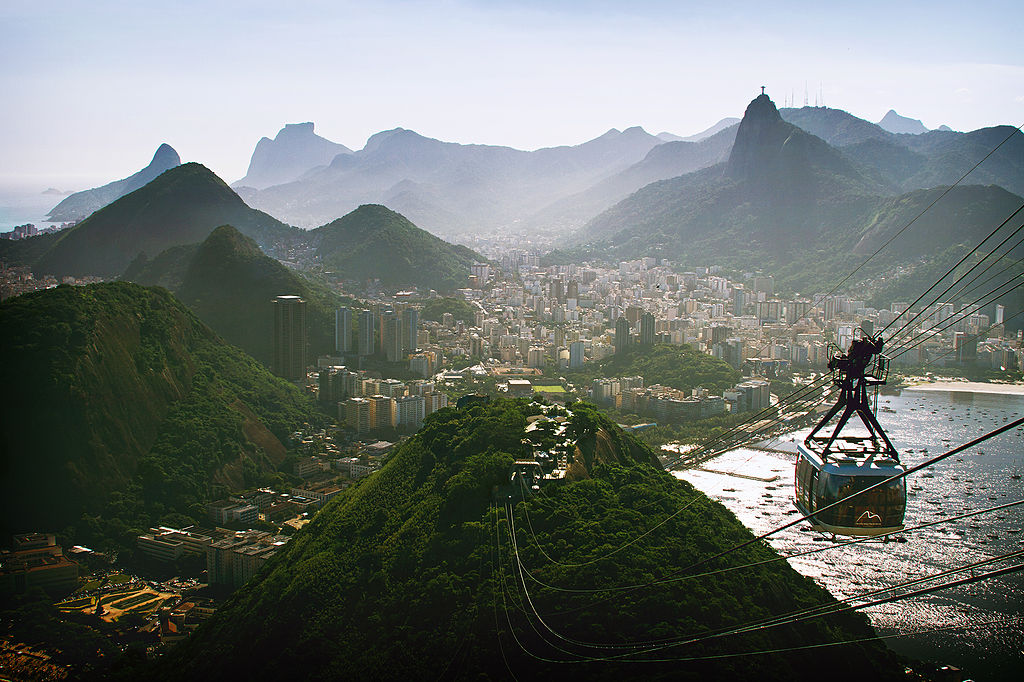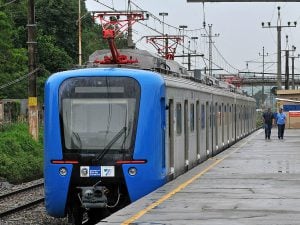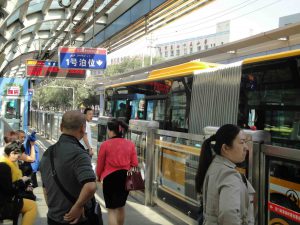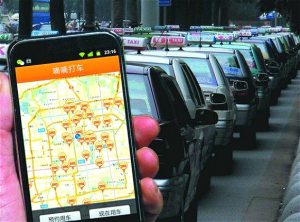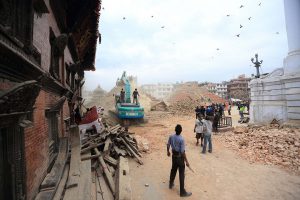Rio de Janeiro’s shiny new electric trains, though only partially installed, have been packed to capacity since they first started running in the city centre at the end of June. Hailed as the most modern means of transportation in the city, the Light Rail Vehicle (LRV), which currently stops at eight of its 14 stations, is temporarily taking passengers free of charge. By the time the Olympic Games begin this evening, the track will have been extended by a further 7.7 kilometres, between the Santos Dumont domestic airport and the Novo Rio bus station in the east of the city.
But the single LRV line is all that is left of a project supposed to consist of six lines and which should have been completed by the start of 2016.
See also: Rio Champions Chinese transport technology
The organisation in charge of the project, however, argues that it still meets the original brief: “The present configuration maintained the full 28 kilometres of track, with stations an average 400 metres apart and wait times of three to 15 minutes,” Rio’s Special Department for Concessions and Public-Private Partnerships (Secpar) told Diálogo Chino.
The second stage of the LRV, which consists of a large section between the main rail station, Gamboa, and the historic Quinze square, will not be up and running until after Rio 2016. Phase three, which includes three new stops along Marechal Floriano Avenue, one of central Rio’s oldest and longest streets, is scheduled for completion in 2017. According to Secpar, the estimated construction and installation cost for the entire LRV system is US$350 million.
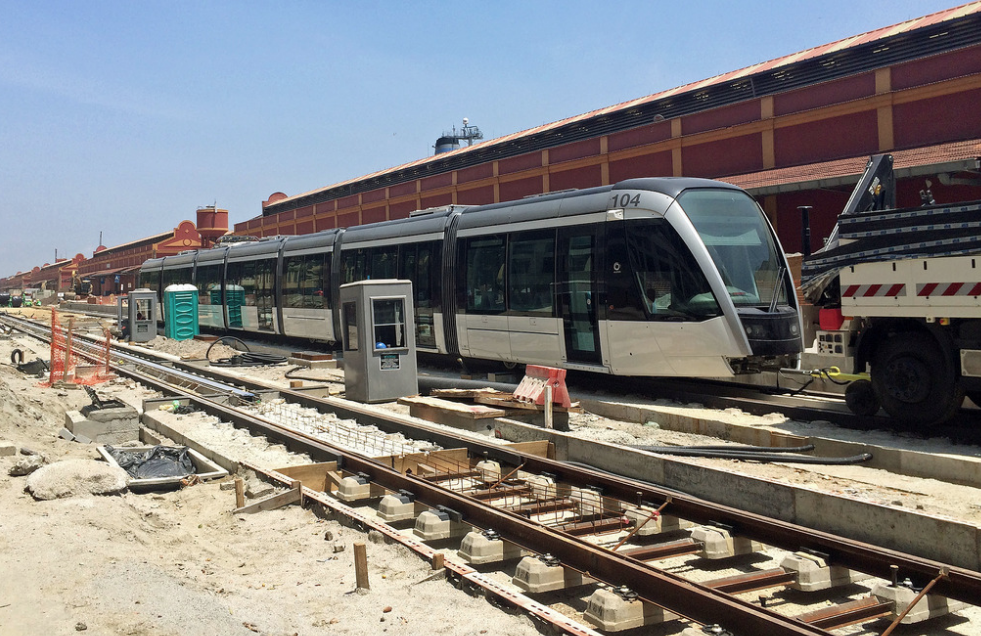
Rio’s LRV trains won’t be transporting as many visitors to the Olympics as the organisers had hoped (Image by mariordo59)
“There’s been a lot of criticism on the topic of mobility, of course, but the Olympic challenge has brought advances,” said Ronaldo Balassiano, from the Traffic Engineering Program at the Federal University of Rio de Janeiro (UFRJ). “We’ve moved beyond a period of over 40 years with no investments in mass transit,” he added.
As one of Brazil’s most congested cities, the International Olympic Committee (IOC) demanded that Rio increase its transportation capacity to accommodate greater demand during the Games. The city government decided to invest in the Bus Rapid Transport system (BRT) of express corridors. “The city would have neither the time nor the money to build new metro lines,” Balassiano said.
The metro system does not serve western Rio, home to a considerable part of the city’s population, but is now connected by the BRT lines. With just a few weeks to go before the Games, a 26-kilometre expressway has been inaugurated between the two sites of the Olympic Park. The bus corridor, known as TransOlímpica, is expected to serve 70,000 people when it becomes fully operational at the beginning of the Games. However, residents will have to wait a little longer to use the service since TransOlímpica will initially only be available to athletes and spectators.
The same goes for metro Line 4, which is not scheduled to be finished until four days before the start of the Games. The 15 trains purchased for the new line are being tested through the night. The rest of the work will be finished using part of the roughly US$ 1 billion in emergency preparation funds granted by the federal government. Only athletes and ticket-holding spectators will be allowed to use Line 4 during the Olympic and Paralympic Games.
Brazilian sports minister Leonardo Picciani said that although the metro is a responsibility of the state government, he has no doubt that it will be fully functional for the Games. “Evidently, the metro will be cleared to run only after all necessary tests have been completed,” the minister said when asked in a press conference if the service would be safe to use considering the official inauguration is so close to the event.
Balassiano believes that although the bus lines were initially designed to serve tourists and spectators of the Olympic Games, they will ultimately benefit the low income population that suffers through hours-long commutes in Rio’s decrepit mass transit system. “The demand was huge, so the BRTs are always packed to capacity.”
Picciani told Diálogo Chino: “Rio citizens will have a new network at their disposal, and they can rest assured that it will work during the Games and will work even better by the end of the Olympics.”
Balassiano said mass transit is still a touchy subject in Brazil but added that pricing and routes require more consideration: “The operation has to be more integrated, with trains, ferries, LRV, buses and shared bicycles. No major city in the world can bear an excessive number of cars anymore,” Balassiano said.
Rio’s 440 kilometres of bicycle lanes are set to increase by a further 10 kilometres by the end of the year, according to the ministry of the environment. There is still no plan to repair the bike path on Niemeyer avenue that collapsed into the sea, killing two people. “The city government immediately obeyed the federal court order to suspend any reconstruction work,” the Rio de Janeiro Public Works Department said but added that it will file an appeal.
Despite this blight on preparations for the Games, Rafael Picciani from Rio’s city government maintains that Olympic goals are being achieved. “The most important thing is the legacy that will remain for the population, and the opportunity to use the new equipment both during and after the event,” he said.
Balassiano agrees that the Olympic legacy is important, but says further investment in mobility is vital. “We can’t wait another 40 years. The investments that were set in motion by the Games need to continue,” he warned.
This articles was originally published on Dialogo Chino.
